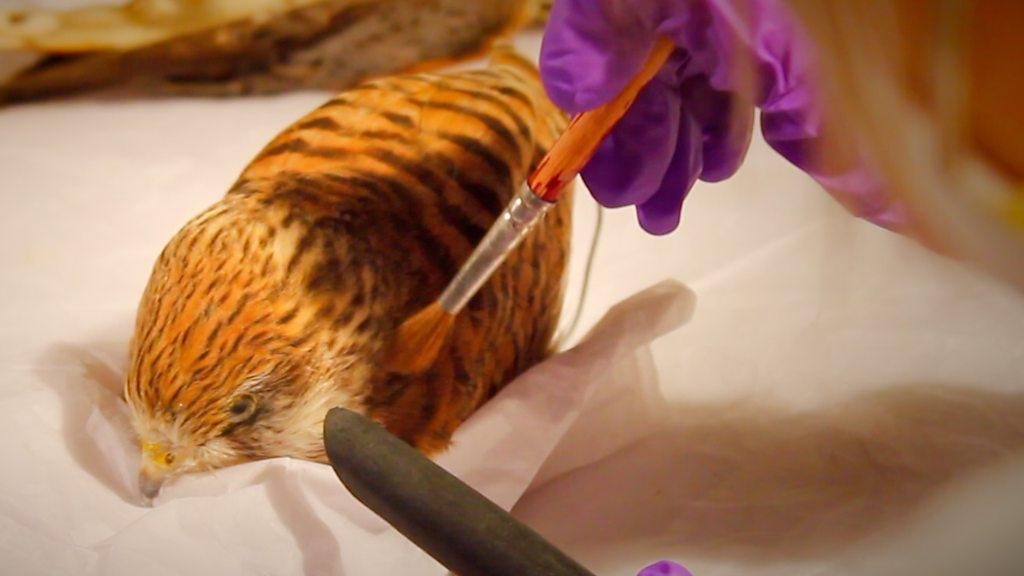Stuffed hippo helps reveal science of whiskers
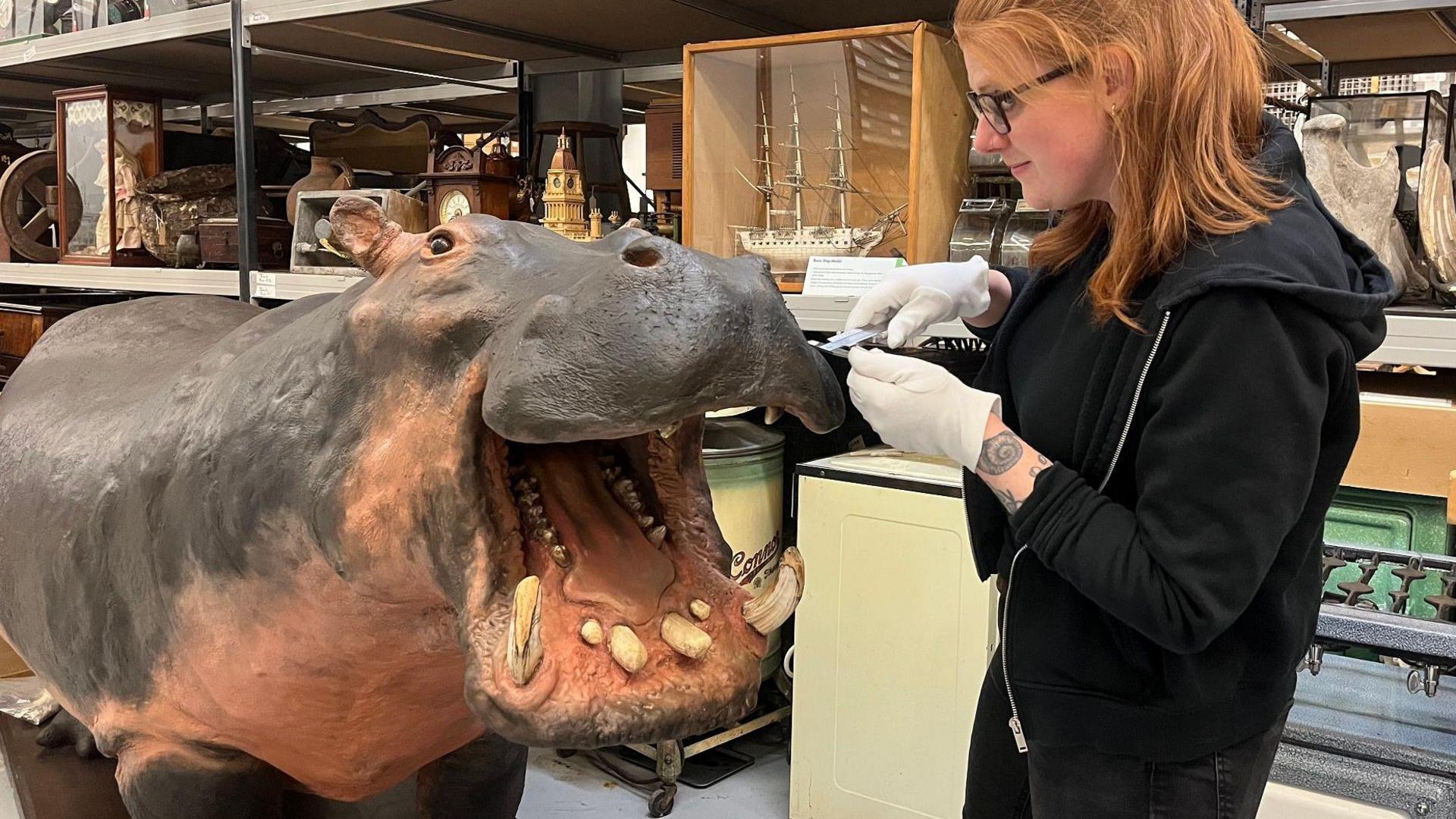
Sarah Burhouse, from Leeds Museums and Galleries, measures the whiskers on Billie the 100-year-old hippo
- Published
A 100-year-old stuffed hippo has helped biologists better understand how mammals use their whiskers.
Billie, a former resident of London Zoo in the 1920s, was taken out of the Leeds Museums archives and studied as part of analysis at Leeds Discovery Centre into the inner workings of whiskers.
Sensory biologist Dr Robyn A Grant, from Manchester Metropolitan University, said it was "the very first time" hippopotamus whiskers had been examined in such close detail.
Dr Grant said: "Large aquatic species, like hippos, walruses and manatees, have hundreds of very small whiskers. While walruses and manatees have been studied a little, hippo whiskers have never been looked at."
Dr Grant, who researches the diversity of whisker numbers and arrangements across mammals, explained: "Working with zoos and museums such as Leeds Discovery Centre, we are trying to understand how the whiskers are arranged, and what the animals use them for."
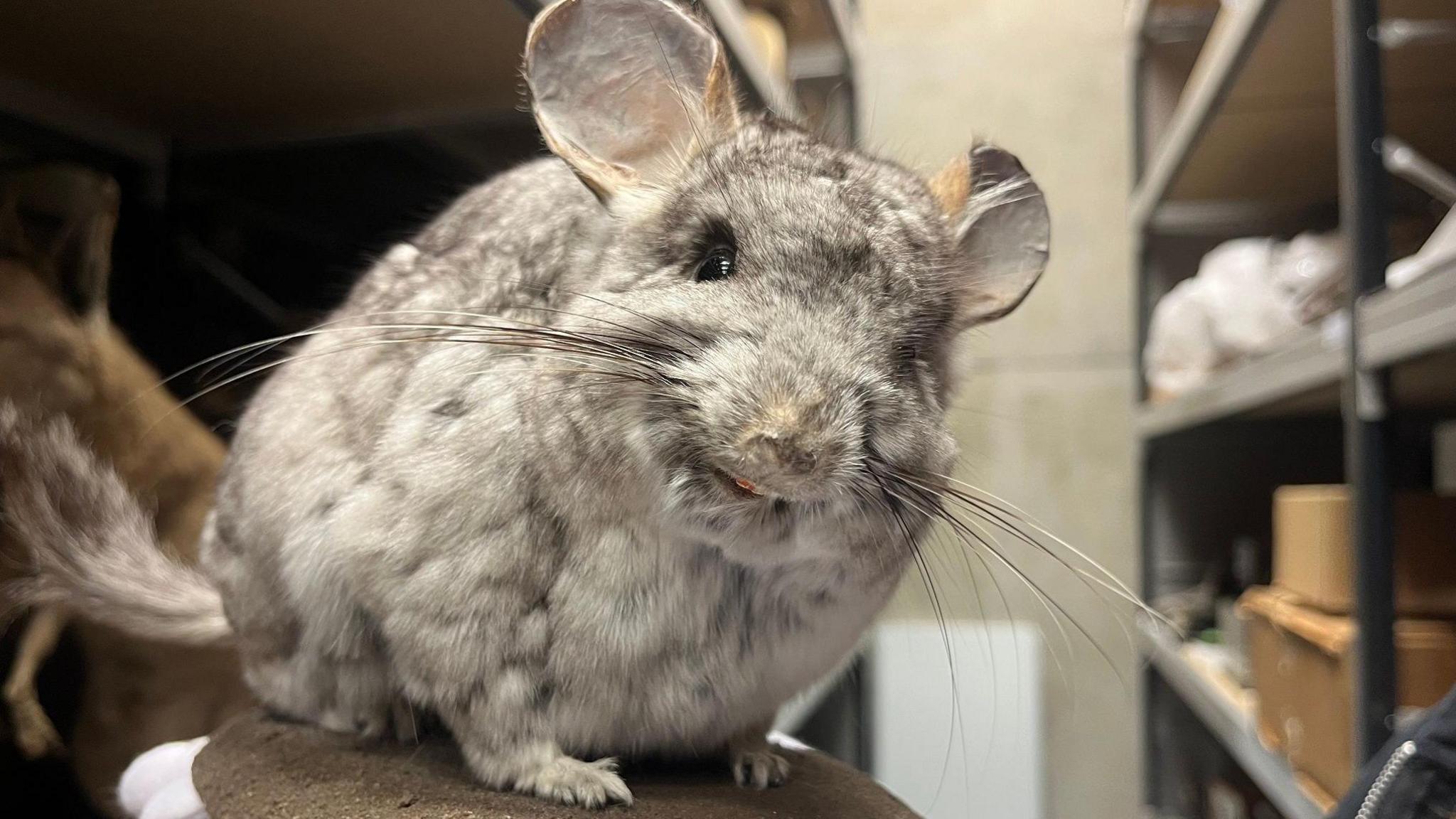
The Leeds Discovery Centre collection is home to thousands of stuffed animals, including chinchillas
Whiskers, also known by the scientific name vibrissae, are sensitive, coarse hairs located on the face and used to sense the surrounding environment.
Billie the hippo was acquired by Leeds Museums in 1938, and has recently undergone an extensive refurbishment to restore him to his original condition.
According to the Discovery Centre, many older taxidermy specimens were missing whiskers due to age or bad craftsmanship.
Among the Leeds collection - home to more than 6,000 taxidermy mammals - are chinchillas, harp seals and coypu, a large South American rodent.
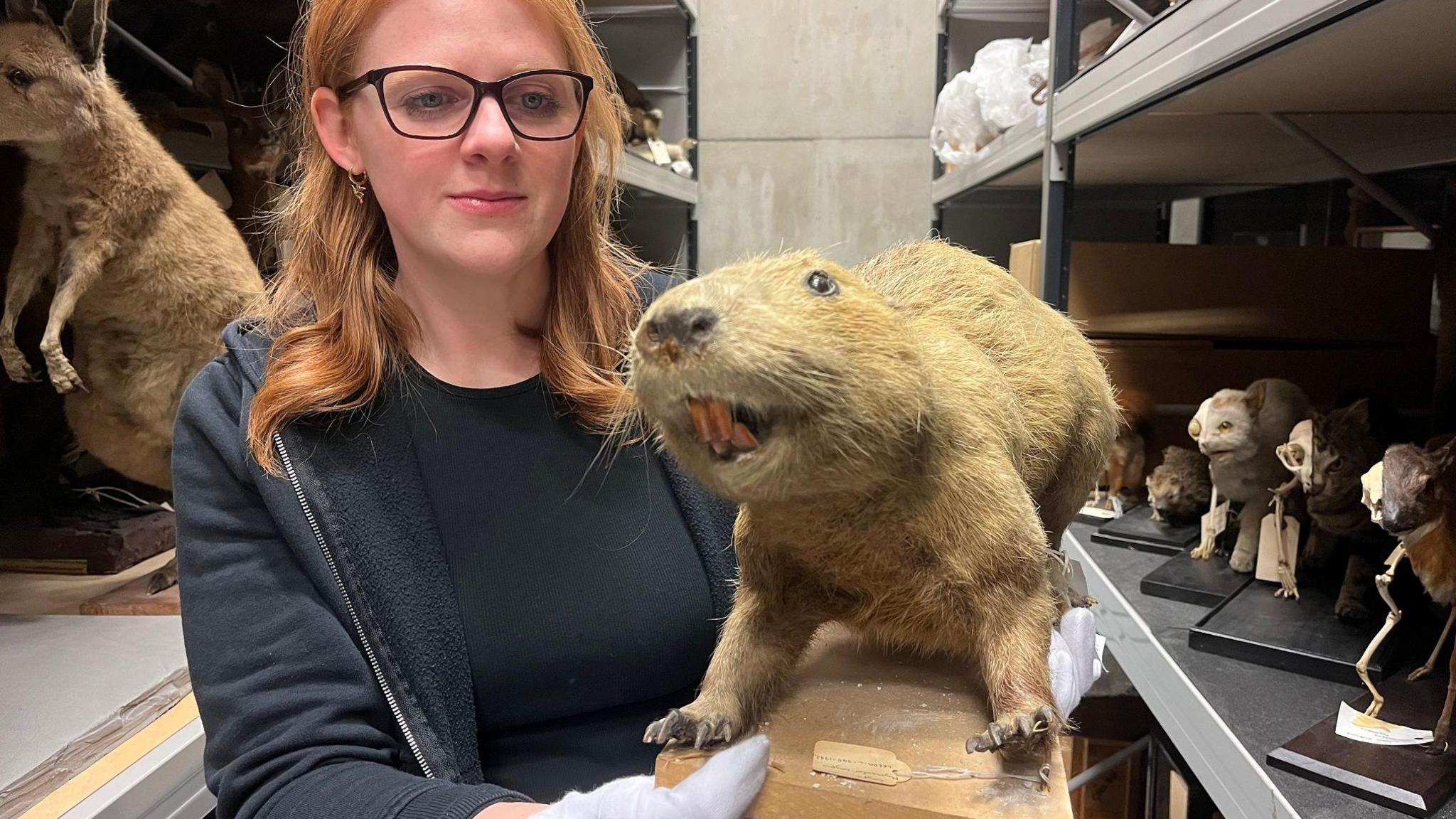
The Leeds collection also includes coypu - a South American rodent
Many of the taxidermy animals were collected in the early 20th Century, when deceased animals were often purchased by taxidermists before being stuffed and mounted.
Sarah Burhouse, Leeds Museums and Galleries curator of natural sciences, said the research into whiskers demonstrated the importance of taxidermy collections.
"We're delighted Billie and our collection have been able to support such a fascinating research project, which could help our understanding of how hippos and other animals use whiskers to interact with their environment," she said.
"It's amazing that these specimens, some collected more than a century ago, can still tell us so much about the natural world and help inform our understanding of how we can protect vulnerable species today and in the future."
Get in touch
Tell us which stories we should cover in Yorkshire
Listen to highlights from West Yorkshire on BBC Sounds, catch up with the latest episode of Look North.
Related stories
- Published1 February 2024
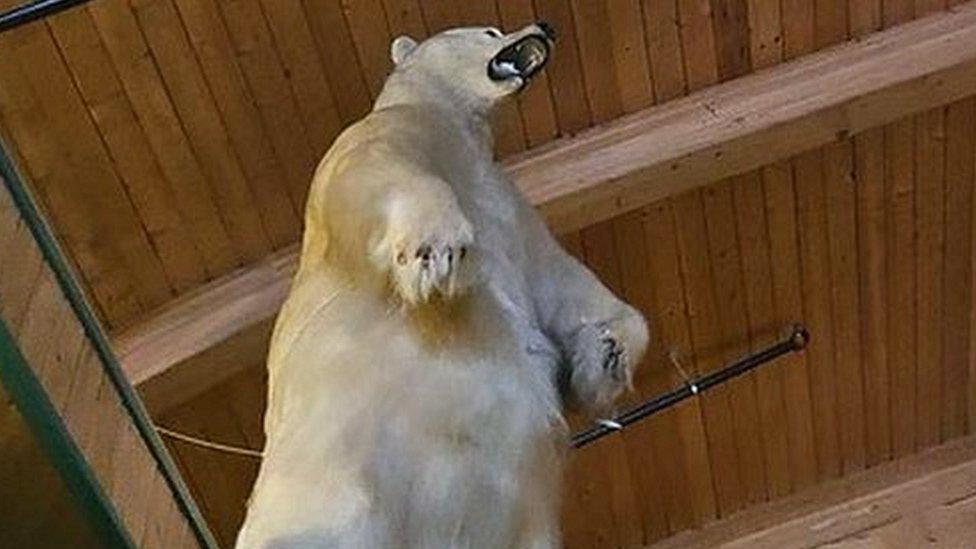
- Published23 March 2019
